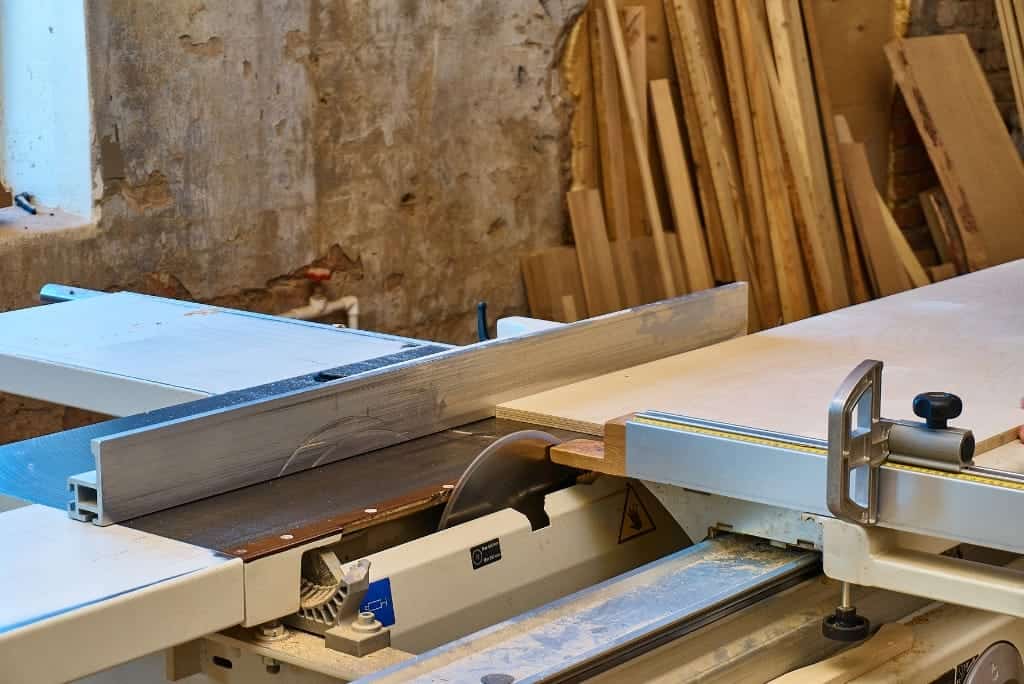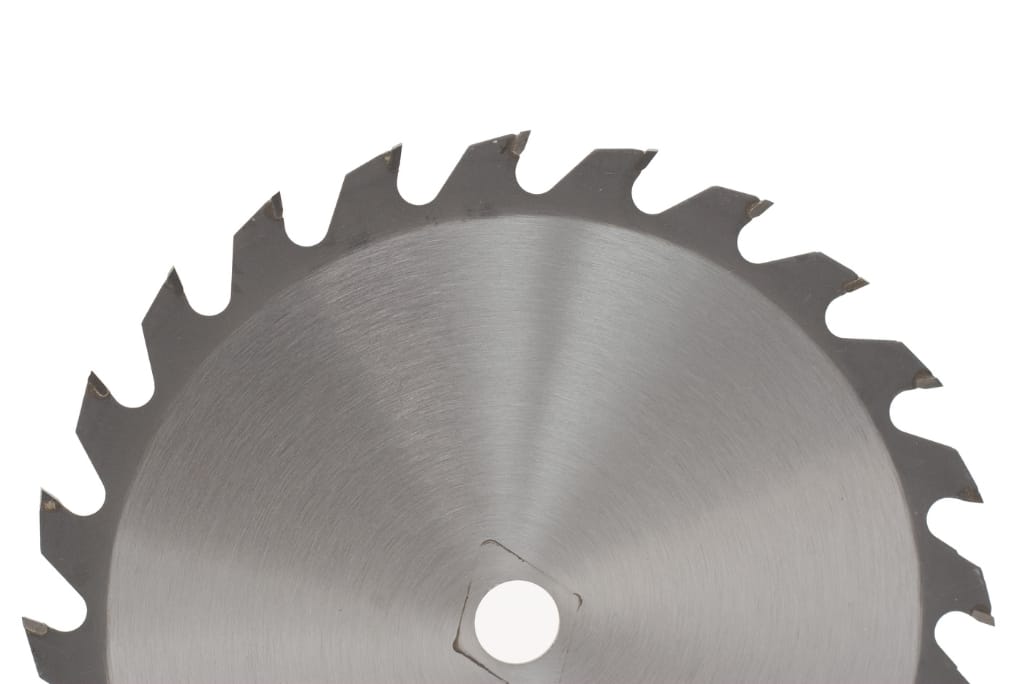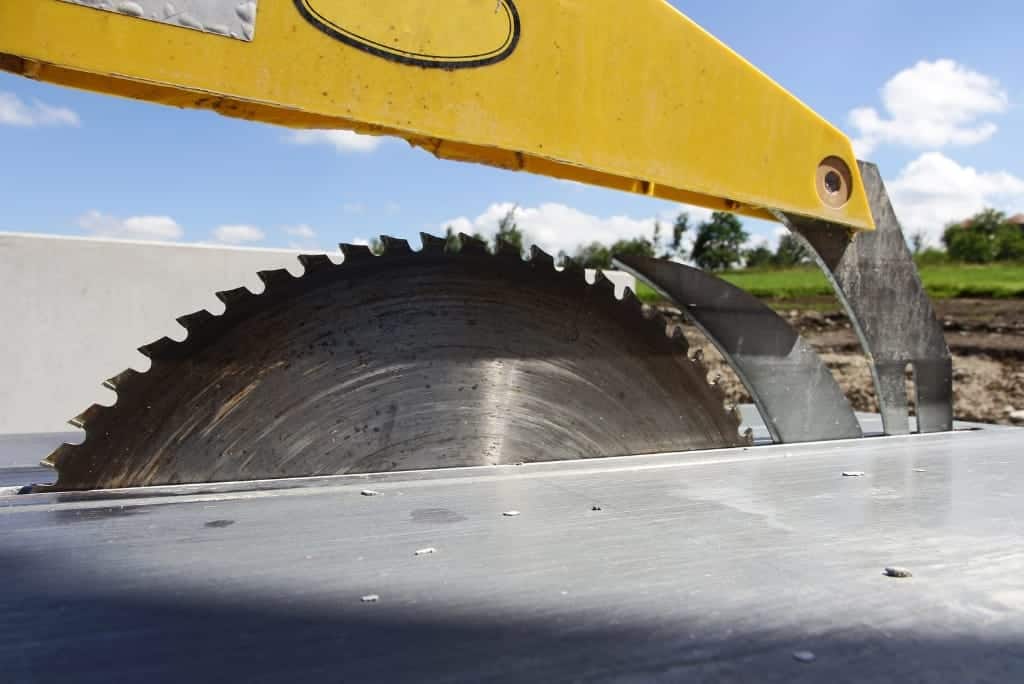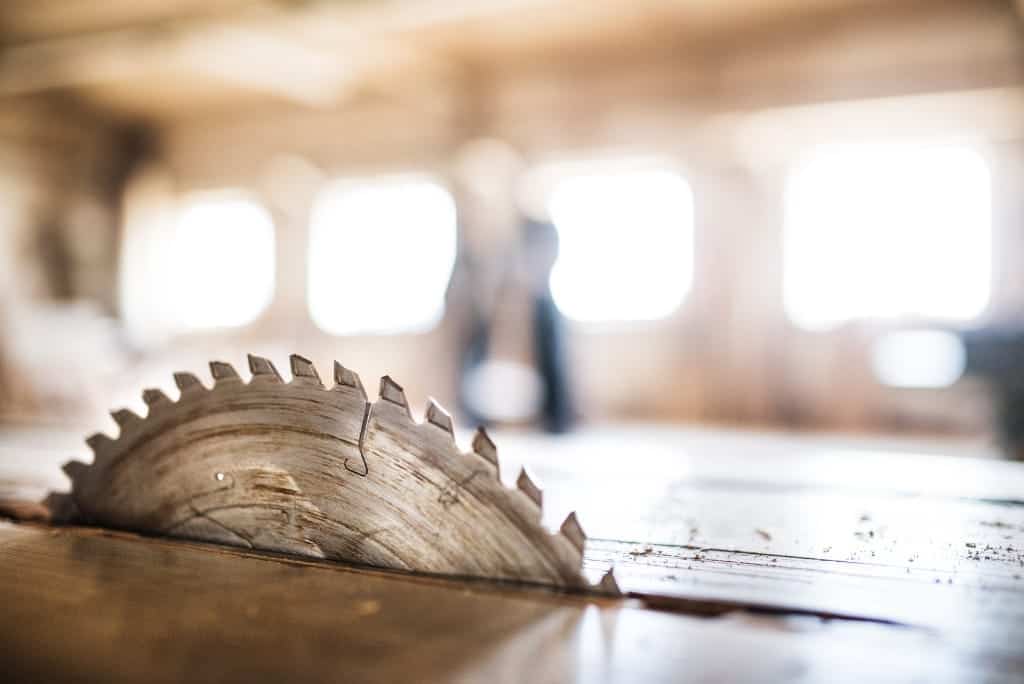Uncover the secrets to flawless plywood cuts in our extensive guide on choosing the ideal table saw blade for your woodworking projects. From the intricacies of blade types and their applications to step-by-step instructions for cutting Plywood, we’ve got you covered.
Combination blades (40-50 Teeth) excel at cutting Plywood, offering versatility for both crosscutting and ripping. Their unique tooth arrangement, featuring five groups with alternating top bevels and flat tops, ensures efficient, precise, and diverse cuts, particularly on thinner plywood sheets.

Let’s know why these table saw blades are best for plywood cutting.
Contents
Understanding Plywood – From Raw Logs to Finished Product
Before understanding the blade selection of Plywood, you must know the structure of the Plywood. Plywood is a versatile engineered wood made from multiple layers of hardwood veneers stacked and glued together, creating a strong and stable material. It is widely available and offers a cost-effective alternative to solid wood for various applications in construction and interior design.
Plywood is manufactured through a series of steps…
First, logs are heated to enhance flexibility before being sliced into veneers, with decorative veneers often thinner. These veneers are then dried to a specific moisture content, with the drying conditions adjusted based on the resin used in later stages.
After drying, veneers may be composed into larger sheets if necessary. During the layup process, the veneers are coated with thermosetting resin and assembled symmetrically before being pressed under heat to activate the resin and consolidate the panel.
Finally, the Plywood undergoes finishing, which may include trimming and sanding, to meet the desired specifications.
Source: United States Environmental Protection Agency
What Type of Table Saw Blade is for Cutting Plywood?
As Plywood is not a whole wood, but layers of wood joined together, there is a great possibility of chipping or even accidents.
That’s why you must be serious about selecting to ensure your cuts are clean, precise, and without chipping and hazard. Below are some of the blades that we’ve experimented with to give you a clear idea of what you should choose.
Also, Read: Cutting Hardwood Vs. Softwood: Which One is Easier to Cut?
ATB Blades – Precision’s Best Friend
Choose Alternate Top Bevel (ATB) blades for an unparalleled cutting experience. So essentially, the teeth on the blade are set up to alternate, with one tilting to the right and the next to the left.
This particular design really shines when you’re working on crosscutting tasks with natural woods or veneered Plywood. ATB blades significantly reduce tear-out, ensuring each cut on your Plywood is nothing short of perfection.

Crosscut Blades – The Key to Clean Cuts
The more teeth the blade has, the cleaner it cuts.
We mostly go for crosscut blades for the cleanest cuts, especially across the grain of Plywood. With a high tooth count and specialized teeth design, they provide precise cuts with minimal tear-out, ensuring your plywood projects are finished with finesse and precision.
The 80-tooth ATB blade stands out, especially for those delicate face veneers, promising a level of precision that truly sets your work apart.
Can You Use Rip Blades For Cutting Plywood? Well, we sometimes use it for cutting Plywood with the grain, but we’ve been woodworking for years and can handle the Plywood with these types of blades. But, for the beginner, we would not recommend that because you can’t get clean cuts, and chances of chipping increase.
But don’t worry, there is a best alternative that we use all the time for cutting Plywood with or across the grain.

Combination Blades: The All-Rounders
Combination blades serve a dual purpose, handling both crosscutting and ripping jobs. The design includes sets of five teeth, comprising four with an alternating top bevel and one flat top, spaced out with wide gullets between each set.
These blades are well-suited for various cuts on Plywood, particularly when working with thinner sheets or when a slightly rougher cut is acceptable. With 40 or 50 teeth, these blades strike a balance, offering a solution that’s both practical and precise.

Carbide Tip Saw Blades – The Smooth Operator
Carbide Tip Saw Blades are the artisans of plywood cutting. Their design, featuring a higher teeth count and smaller teeth, meticulously takes small bites from the wood to go slow, drastically reducing chipping and roughness.
We usually opt for a 140 TPI blade or a “Plymouth” blade with up to 200 teeth for a 10″ table saw blade and experience clean cuts like never before.
Laminate Blades – For the Pros
When your projects demand a professional touch, Laminate Blades are your go-to. It is specially crafted for cutting Plywood and laminate materials.
We love these blades because they boast 60 teeth and a Triple Chip Grind (TCG), ensuring a smooth cut with minimal chipping on the bottom edge. It’s the professional standard, ensuring your work stands out in both quality and craftsmanship.
You see, in all the blades listed there, some are good for crosscutting alone, while some are best for just rip cuts except for the combination blades. So, our suggestion is to go for a combination blade because of its versatility. P.S. We use combination blades!
Summing Up
| Blade Type | Best For | Features and Notes |
|---|---|---|
| Combination Blade | Versatile cuts, especially thinner plywood sheets | Unique tooth arrangement for diverse cuts, handles both crosscutting and ripping. |
| ATB Blades (Alternate Top Bevel) | Precision cuts, especially for crosscutting | Teeth alternate tilting right and left. |
| Crosscut Blades | Clean cuts across plywood grain | High tooth count for minimal tearout. |
| Rip Blades | Cutting plywood with the grain | Not recommended for beginners due to potential for chipping and less clean cuts |
| Carbide Tip Saw Blades | Precision cuts with minimal chipping | High teeth count, smaller teeth take small bites for clean cuts. |
| Laminate Blades | Cutting plywood and laminate materials | 60 teeth, Triple Chip Grind (TCG) for smooth cuts with minimal chipping. |
How Do You Cut Plywood on a Table Saw?
Below are some steps we use as our regular practice for cutting a piece of Plywood. Follow these steps to get the best results.
Also, Read: What Should You Never Cut on a Table Saw?
Step 1: Secure Setup
Place the Plywood on the table saw with the top-quality side facing up, ensuring it is not touching the blade. Establish an outfeed table to provide support as the Plywood moves through the blade. Also, for larger panels, utilize roller stands or other supports to enhance stability and minimize the potential for chipping.
Ensure a riving knife is installed to safeguard against kickback, and confirm that both infeed and outfeed areas are adequately supported.
About kickbacks, we’ve a detailed article that you should read and be safer: Kickbacks In a Table Saw
Step 2: Choose the Right Blade
Select a blade according to our guide (mentioned above). Ensure the blade is sharp, rust-free, and adjusted slightly deeper than the plywood thickness.
For making your blades rust-free and clean, you should check our article on lubricating table saw parts.
Step 3: Precise Measurement and Marking
Mark your cut line clearly using a straight edge, measuring tape, and pencil. Applying masking tape along the cut line on both sides of the Plywood can help to secure the fibers and significantly reduce the risk of chipping.
Step 4: Correct Fence and Miter Gauge Setup
Adjust the rip fence or miter gauge to ensure precise alignment, reducing the likelihood of uneven pressure. Ensure all settings are securely locked in place.
Step 5: Start Cutting
Allow the saw to reach full speed before cutting. Guide the Plywood steadily, maintaining constant pressure against the fence and a uniform feed rate, and complete the cut once started; don’t stop again and again.
This prevents sagging and potential chipping at the end of the cut.
We’ve written a detailed article on the speed of cutting, we’d suggest you to have a look before cutting any wood: Cutting Wood Fast Vs Slow: Which Way Is Better or Worse?
Step 6: Review Your Work
Inspect your cut, appreciating the smooth edges and lack of chipping. Remember, the key to a chip-free cut lies in preparation, the right tools, and a controlled, steady approach.
Why is Plywood Difficult to cut?
Handling Large Plywood Sheets with Precision
The substantial size and weight of plywood sheets, such as a full 3/4 inch MDF sheet weighing nearly 100 pounds and spanning 4 feet wide, make them challenging to handle and maneuver.
This bulkiness can turn the material into a cumbersome lever, where even small movements can significantly affect the cut’s quality. Precision is paramount, and any gaps between the Plywood and the fence can lead to inaccuracies.
To combat these challenges (getting precise and clean cuts), utilize support such as an outfeed table, which prevents sagging and maintains the integrity of the cut.
For enhanced control and accuracy, consider cutting large sheets into more manageable pieces with a circular saw before transitioning to the table saw.
A stray staple on the Plywood’s edge could snag during a cut, causing disruptions and potential inaccuracies. The sheet’s bottom may also catch on objects, requiring careful maneuvering to continue the cut.
A Proactive Approach
To ease the cutting process, consider cutting large plywood sheets into more manageable pieces before moving to the table saw. This initial step can significantly enhance control and accuracy.
The Challenges of Layered Construction
Plywood’s strength comes from its layered construction, which also introduces a propensity for tear-out, particularly when cutting across the delicate face veneer. A crosscut blade and precise operation are vital to mitigate this and ensure clean cuts.
This challenge becomes more pronounced when working with specific materials like red oak plywood, known for its fragile top veneer layer.
Whether dealing with this or other types of Plywood, employing the right tools and a gentle approach is crucial to preserving the material’s integrity and achieving a flawless finish.
All right, that’s all regarding cutting Plywood with a table saw and blade selection. If you are confused, just comment below.
